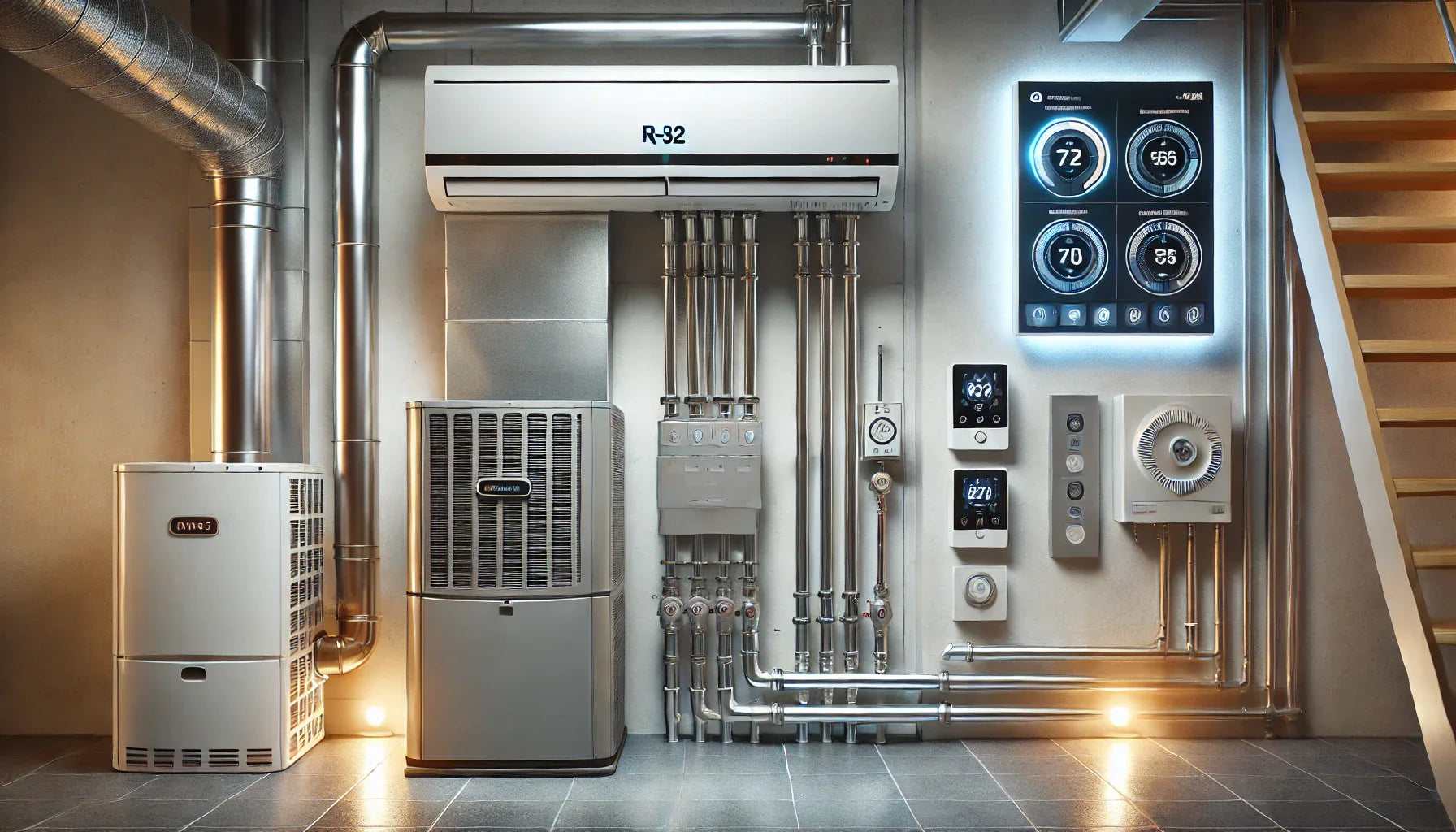The heating, ventilation, and air conditioning (HVAC) industry is undergoing a significant transformation, driven by the need for energy efficiency, environmental sustainability, and regulatory compliance.
Central to this evolution is the adoption of R-32 refrigerant and advancements in gas furnace technologies. This article explores these innovations, their benefits, and the roles of key organizations like ASHRAE and the EPA in shaping the future of HVAC.
Understanding R-32 Refrigerant
R-32, or difluoromethane, is a next-generation refrigerant gaining popularity in modern HVAC systems. Compared to traditional refrigerants like R-410A, R-32 offers several advantages:
-
Lower Global Warming Potential (GWP): R-32 has a GWP of 675, significantly lower than R-410A's GWP of 2,088, making it a more environmentally friendly option.
-
Higher Energy Efficiency: R-32 systems are more efficient, leading to reduced energy consumption and lower utility bills.
-
Ease of Handling: As a single-component refrigerant, R-32 is easier to recycle and has a lower charge requirement, reducing the amount needed for effective operation.
These attributes make R-32 a preferred choice for manufacturers aiming to meet stringent environmental regulations and consumers seeking cost-effective, efficient cooling solutions.
Advancements in Gas Furnace Technologies
Gas furnaces have also seen significant technological improvements aimed at enhancing performance and energy efficiency:
-
Modulating Burners: These allow the furnace to adjust its heat output incrementally, providing consistent indoor temperatures and reducing energy usage.
-
Variable-Speed Blowers: By adjusting the airflow rate, these blowers improve comfort levels and system efficiency.
-
Smart Thermostats: Integration with smart home systems enables precise control over heating schedules, further optimizing energy consumption.
Such innovations contribute to higher Annual Fuel Utilization Efficiency (AFUE) ratings, indicating better fuel-to-heat conversion rates and reduced greenhouse gas emissions.
The Role of SEER2 in Energy Efficiency
The Seasonal Energy Efficiency Ratio 2 (SEER2) is a metric used to evaluate the cooling efficiency of air conditioning systems over a typical cooling season. Higher SEER2 ratings signify greater energy efficiency. With the introduction of R-32 refrigerant and advanced system designs, modern HVAC units are achieving higher SEER2 ratings, translating to lower energy costs and reduced environmental impact.
Regulatory Framework: ASHRAE and EPA
The American Society of Heating, Refrigerating and Air-Conditioning Engineers (ASHRAE) and the Environmental Protection Agency (EPA) play pivotal roles in guiding the HVAC industry's transition toward more sustainable practices:
-
ASHRAE: Develops standards and guidelines for HVAC system design and operation, including those related to refrigerant safety and efficiency.
-
EPA: Regulates the use of refrigerants under the Clean Air Act, promoting alternatives with lower environmental impact and overseeing the phase-out of ozone-depleting substances.
Compliance with ASHRAE standards and EPA regulations ensures that HVAC systems are safe, efficient, and environmentally responsible.
Benefits of R-32 and Advanced Gas Furnace Systems
Adopting R-32 refrigerant and modern gas furnace technologies offers several advantages:
-
Enhanced Energy Efficiency: Improved system designs and refrigerants lead to lower energy consumption.
-
Environmental Sustainability: Reduced GWP and emissions contribute to a smaller carbon footprint.
-
Cost Savings: Lower energy usage translates to decreased utility bills over time.
-
Regulatory Compliance: Meeting current and future standards avoids potential penalties and supports environmental goals.
Conclusion
The HVAC industry's future is being shaped by innovations in refrigerants like R-32 and advancements in gas furnace technologies. These developments not only enhance energy efficiency and environmental sustainability but also align with regulatory frameworks established by organizations such as ASHRAE and the EPA. For consumers and industry professionals alike, embracing these innovations is a step toward a more sustainable and cost-effective future in heating and cooling.







